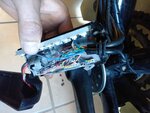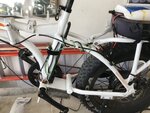Locko90
New Member
Hey guys, I've got a dillinger off road kit on my bike battery is 48volt 13ah.
I was looking at getting a rear rack pannier with 2 bags and have 2 48v 20ah batterys on bike, to give me a total of 53ah battery capacity.
How would I go about wiring in the 2 battery's safely?
I've attached pictures of the batterys I'm wanting to put on the bike and the kit I'm using.
Any help would be great TIA
I was looking at getting a rear rack pannier with 2 bags and have 2 48v 20ah batterys on bike, to give me a total of 53ah battery capacity.
How would I go about wiring in the 2 battery's safely?
I've attached pictures of the batterys I'm wanting to put on the bike and the kit I'm using.
Any help would be great TIA



















